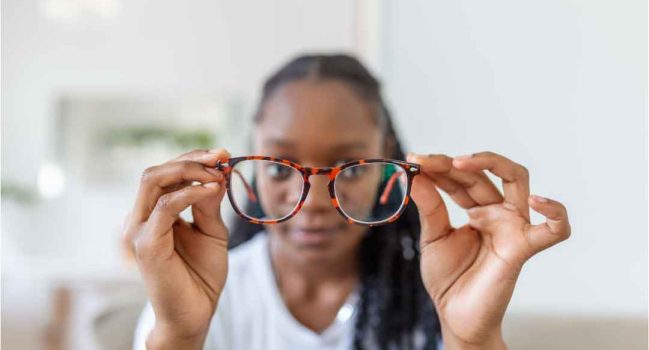
Different types of lenses explained
Do you know your bifocals from your trifocals? In this post, our head office team discusses the different types of lenses used in frames.
Prescription lenses are vitally important; they are what gives prescription glasses the ability to provide sharp, clear vision. Everyone has their own unique vision needs so there are many types of prescription lenses and glasses available.
At Eyecare Plus, we understand that this can get confusing, so we have put together this ‘Guide to Glasses’ to help. Whether your optometrist determines you are nearsighted, farsighted or suffer from a condition like digital eyestrain, this guide can help you better understand the types of prescription lenses you need, and why.
Prescription glasses
When we say ‘prescription glasses’ we mean that the lenses are specifically designed to meet the vision needs of specific patients. Prescription glasses are unique to each person. They have much better lens and frame quality than the over the counter ‘reading glasses’ that you can buy at pharmacies or dollar shops.
Prescription lenses
‘Prescription lenses’ are provided by optometrists (eye doctors) after a comprehensive eye exam. As a general rule, the ‘prescription’ in prescription lenses is good for about two years. Sometimes, the prescription lens for one eye is different from the other and they correct different problems.
It is important to note that the ‘prescription’ in your prescription lens is NOT THE SAME as a prescription in your contact lens prescription – you need a separate prescription for that.
Photochromatic lenses
Often called by the most popular brand name ‘Transition Lenses,’ photochromatic lenses are transparent indoors but automatically adapt to the light as you move outdoors. The glasses darken within about a minute in bright light. Photochromatic lenses are available in almost all lens designs and materials.
Single vision lenses
Single vision lenses correct single vision problems. That is: they work for people who are either nearsighted or farsighted, but not a mix of both. Single vision lenses have the same corrective power distributed evenly throughout the whole lens. As we age, single vision lenses become less effective at correcting our vision problems, which is why most people switch to ‘bifocal,’ ‘trifocal’ or ‘progressive lenses.’
Bifocal lens
Bifocal lenses are for people who are both nearsighted and farsighted, a condition (called ‘presbyopia’) that is extremely common in people over 40. (‘Bi’ means ‘two’). Bifocal lenses are divided into two parts and have two corrective lens powers – one for distance and one for close up. Instead of having a pair of glasses to see off in the distance and another pair to read things up close, bifocals combine the two in one. Basically, it is like having a pair of near vision glasses built into your far vision glasses.
Trifocal lenses
Trifocal lenses provide three distinct prescriptions. They are split into three distinct sections on the lenses, correcting near, far and intermediate vision. In most trifocals, the top part of the lens
corrects far away vision, the middle part corrects intermediate (about arm’s length) and the lower part of the lens corrects close-up vision.
Progressive lenses
Progressive lenses are multifocal lenses that provide near, far and intermediate vision correction without the distinct lines across the lenses. This type of lens provides a gradual transition in vision correction from the top to the bottom of the lens.
Blue light lenses
Computer screens emit blue light, which is associated with a risk of eye damage. Staring at a computer screen (especially over long periods of time) exposes your eyes to digital eye strain. Digital eye strain is not the best feeling, but there are glasses made just for this. Blue light lenses have a special coating to block blue light and reduce the potential harm to your eyes.
Plastic lenses
Plastic lenses are the most common type of corrective lenses used in glasses. They are a high-quality, less-expensive option, but they are not as scratch-resistant as glass lenses. Generally speaking, plastic lenses are the safer choice for kids.
Glass lenses
Glass lenses tend to be more durable and easier to clean than plastic lenses. However, glass lenses are heavier than plastic lenses and the weight tends to go up as the prescription power goes up.
Book an eye test with us for all your eyecare needs for you and your family. We are locals caring for locals that offer comprehensive eye examinations, prescription glasses, frames and contact lenses.
Ready to book an appointment?
Online bookings available or call us on (07) 3463 0349.
This website does not provide medical advice. It is intended for informational purposes only. It is not a substitute for professional medical advice, diagnosis or treatment. Never ignore professional medical advice in seeking treatment. If you think you may have a medical emergency, immediately dial Triple 0 (000).

